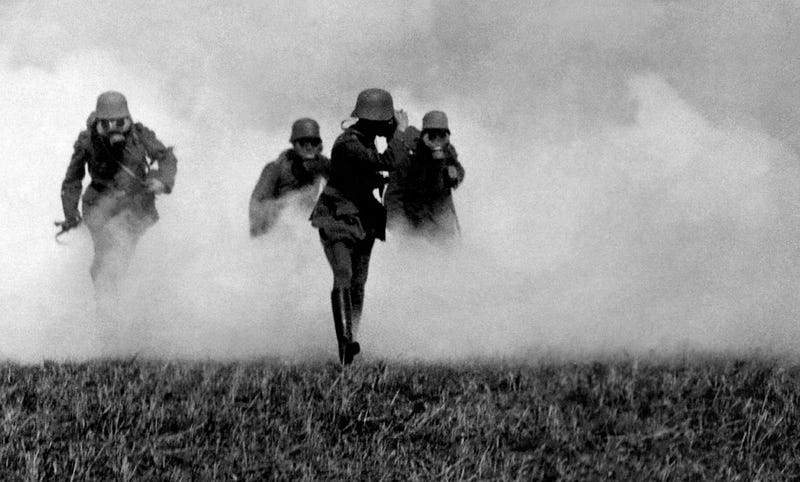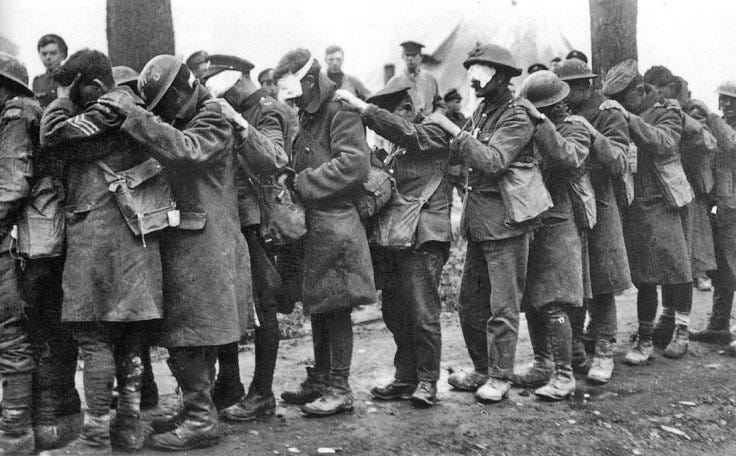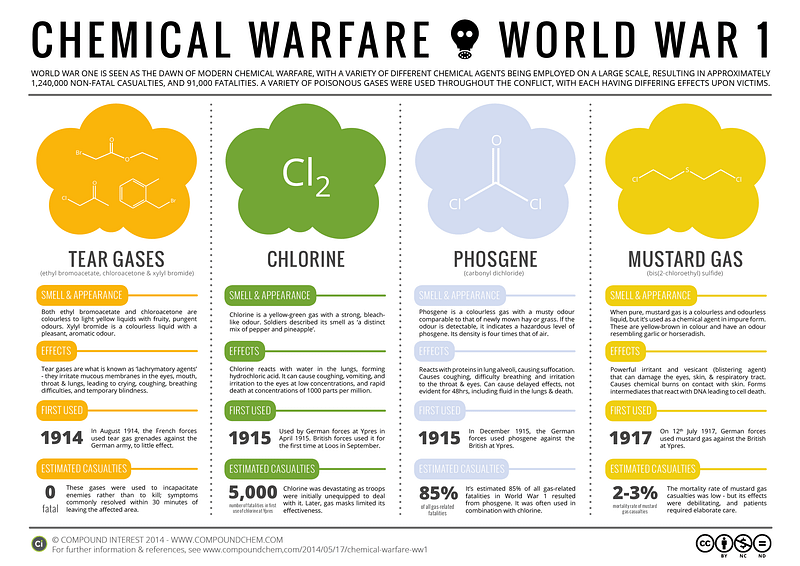The Horrors of Chemical Warfare: A Legacy of World War I
Written on
The Brutality of World War I
World War I stands as one of history's most devastating conflicts. Soldiers endured protracted trench warfare and relentless human wave assaults, leading to staggering casualty rates. The psychological scars from such brutality have lingered long after the war's end.
In addition to traditional combat, the war marked the introduction of tanks, aircraft, and machine guns on the battlefield. Amidst these threats, another peril emerged: the use of lethal poison gas.

The Evolution of Chemical Warfare
As the Industrial Revolution progressed, scientific advancements in chemistry flourished. While many discoveries enhanced civilian life, others were repurposed for warfare. Recognizing the potential dangers, European nations signed the Hague Convention in 1899, which prohibited the use of projectiles designed solely for releasing toxic gases. This agreement aimed to curtail the irreversible damage posed by chemical weapons.
However, less than twenty years later, this treaty was breached by Germany in World War I.
The Initial Assaults
The first deployment of poison gas occurred on January 31, 1915, when Germany unleashed 18,000 canisters of xylyl bromide against Russian forces in Poland. Fortunately, the harsh winter conditions diminished the attack's effectiveness.
Unperturbed, the Germans escalated their efforts, employing Chlorine gas against French Algerian troops at the Second Battle of Ypres on April 22, 1915. Thousands of gas cylinders lined the front, releasing a terrifying yellow-green cloud that advanced towards the soldiers. The Chlorine gas reacted with moisture in the lungs, forming hydrochloric acid that caused agonizing injuries and, in many cases, death.
Despite negligible territorial gains from the Battle of Ypres, the Germans demonstrated a blatant disregard for the Hague Convention.

The Escalation of Chemical Arms
Initially, soldiers were unprepared for gas attacks, often worsening their condition by drinking water, which reacted with Chlorine to produce more hydrochloric acid. However, as the war progressed, countermeasures were developed, including gas masks. Early versions were often improvised and uncomfortable, leading to the issuance of standardized masks by military forces.
In retaliation to Germany's Chlorine gas, the Allies created their own chemical weapon: Phosgene gas. This colorless agent was far deadlier than Chlorine, with symptoms appearing only hours or days later. Germany responded with Mustard gas, a lethal chemical that caused severe skin burns upon contact, rendering gas masks ineffective.

The Aftermath and the Push for a Ban
Following the conclusion of World War I, the global community expressed horror at the devastating impact of chemical weapons. Yet, acceptance of their use lingered until the rise of the anti-war movement in the 1920s.
In response to changing sentiments, the League of Nations began drafting the Geneva Protocols, which prohibited chemical and biological weapons in warfare. Despite these noble intentions, the protocols were ultimately insufficient. Twenty years later, Nazi Germany employed chemical agents in the Holocaust, and the United States used Agent Orange and Napalm in Vietnam, resulting in lasting consequences.
The desire to ban chemical weapons has been a persistent theme since the Hague Convention. However, the grim reality remains that nations may resort to any means necessary to gain an advantage in conflict, often at the expense of human lives.
Chapter 2: The Continued Use of Chemical Weapons
The global community continues to grapple with the implications of chemical warfare, as evidenced by recent conflicts.
The first video explores the topic of weapons that even the military has deemed illegal, shedding light on the ongoing challenges surrounding chemical warfare.
The second video examines the historical context of chemical weapon usage since their prohibition, revealing how nations have navigated this complex issue.